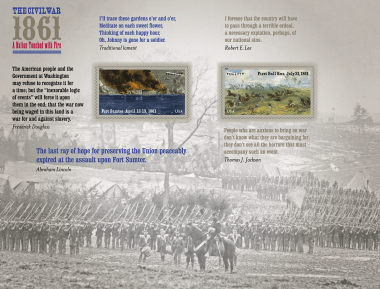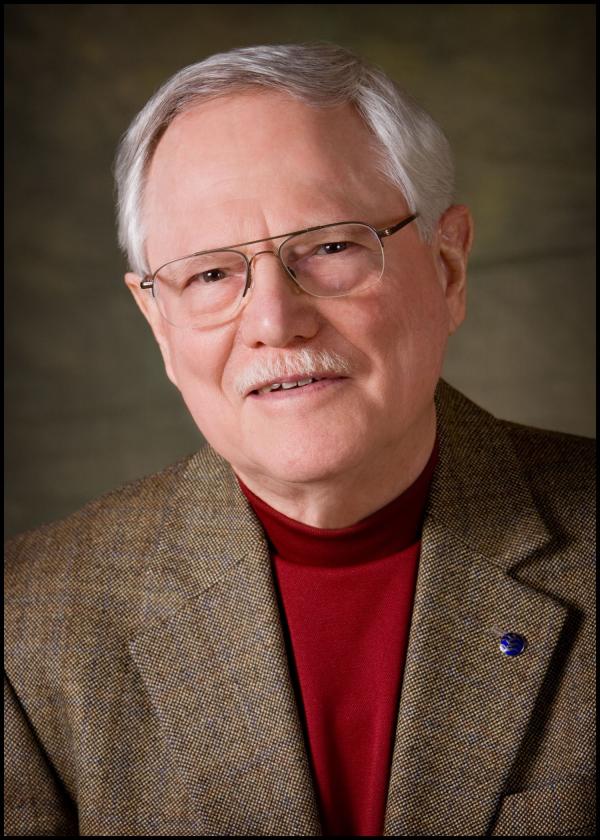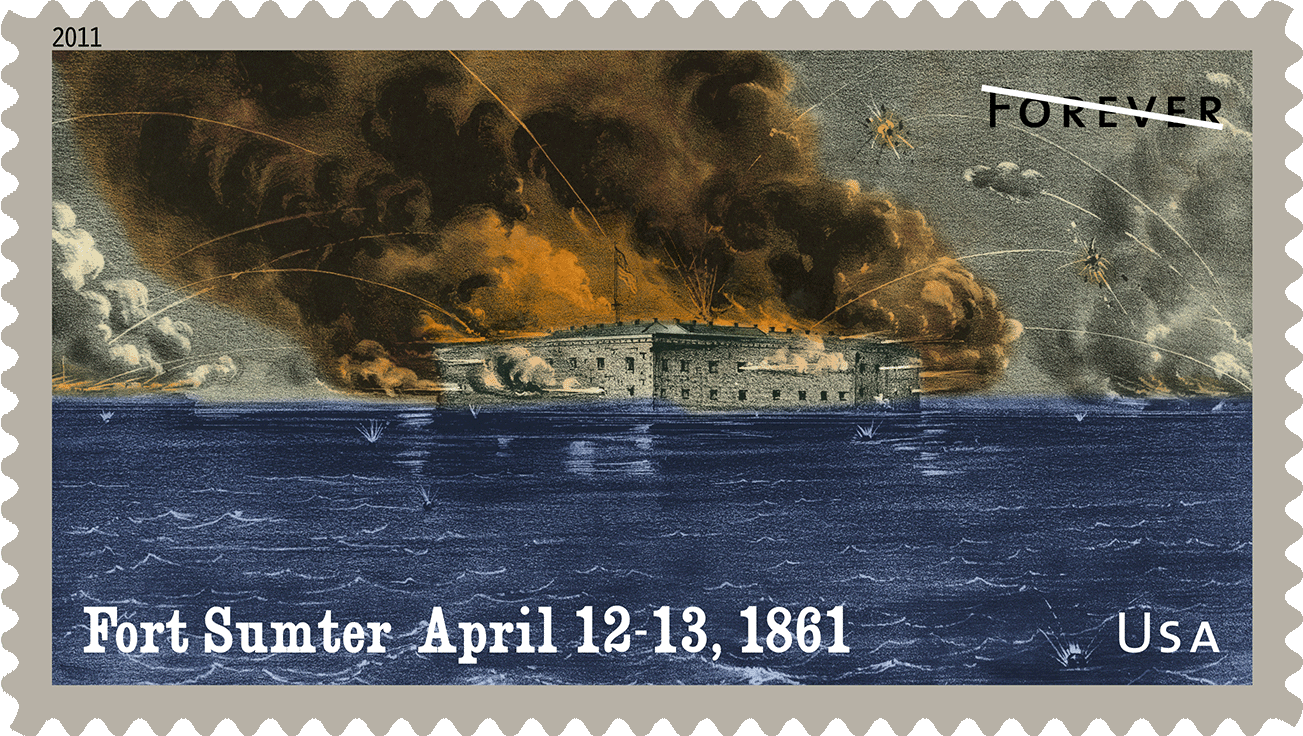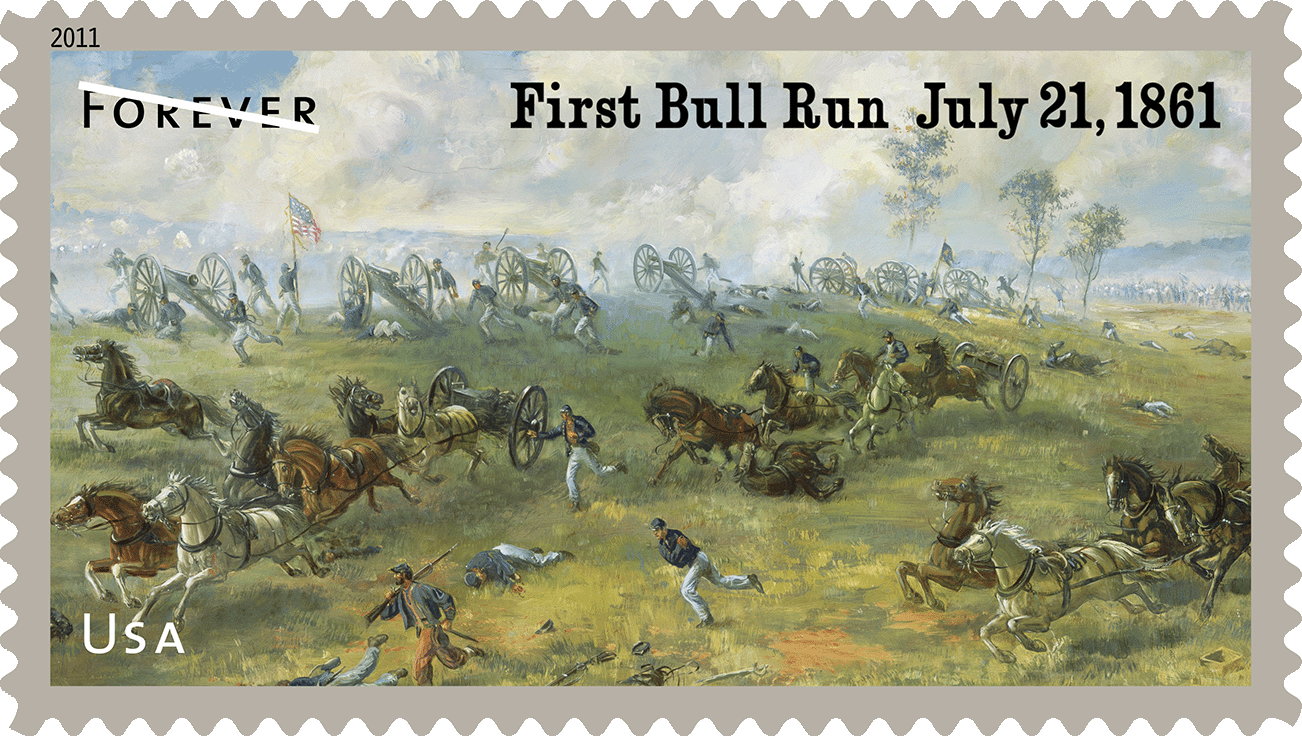
About This Stamp
With this 2011 issuance, the U.S. Postal Service begins a series commemorating the 150th anniversary of the Civil War, joining others across the country in paying tribute to the American experience during the tumultuous years from 1861 to 1865. A souvenir sheet with two stamp designs will be issued each year through 2015. For 2011, one stamp depicts the beginning of the war in April 1861 at Fort Sumter, South Carolina, while the other depicts the first major battle of the war three months later at Bull Run, near Manassas, Virginia. Art Director Phil Jordan created the stamps using existing images of Civil War battles. The Fort Sumter stamp is a reproduction of a Currier & Ives lithograph, circa 1861, titled “Bombardment of Fort Sumter, Charleston Harbor.” The First Bull Run stamp is a reproduction of a 1964 painting by Sidney E. King titled “The Capture of Rickett’s Battery.” The painting depicts fierce fighting on Henry Hill over an important Union battery during the Battle of First Bull Run. The stamp pane’s background photograph shows a Union regiment assembled near Falls Church, Virginia, circa 1861. The stamp pane includes comments on the war by Frederick Douglass, Abraham Lincoln, Thomas J. “Stonewall” Jackson, and Robert E. Lee. It also includes some of the lyrics used during the Civil War in “Johnny is Gone for a Soldier,” a song dating back at least to the Revolutionary War. The Fort Sumter and First Bull Run stamps are being issued in souvenir sheets of 12 self-adhesive Forever® stamps. Forever stamps are always equal in value to the current First-Class Mail one-ounce rate.
Art Director

Phil Jordan
Phil Jordan grew up in New Bern, North Carolina, and attended East Carolina University. After Army service in Alaska, he graduated from Virginia Commonwealth University with a degree in visual communications. He worked in advertising and in design at a trade association before joining Beveridge and Associates, Inc., where he provided art direction for corporate, institutional, and government design projects. A partner in the firm, he left after 18 years to establish his own design firm where he managed projects for USAir, NASA, McGraw-Hill, IBM, and Smithsonian Books, among others. He was Design Director of Air & Space/Smithsonian magazine for 15 years. His work appeared in numerous exhibitions and publications such as Graphis and Communications Arts. A past president of the Art Directors Club of Metropolitan Washington, he was an art director for the U.S. Postal Service from 1991 to 2014. A resident of Falls Church, Virginia, he is a retired glider pilot and a member of the Skyline Soaring Club.

